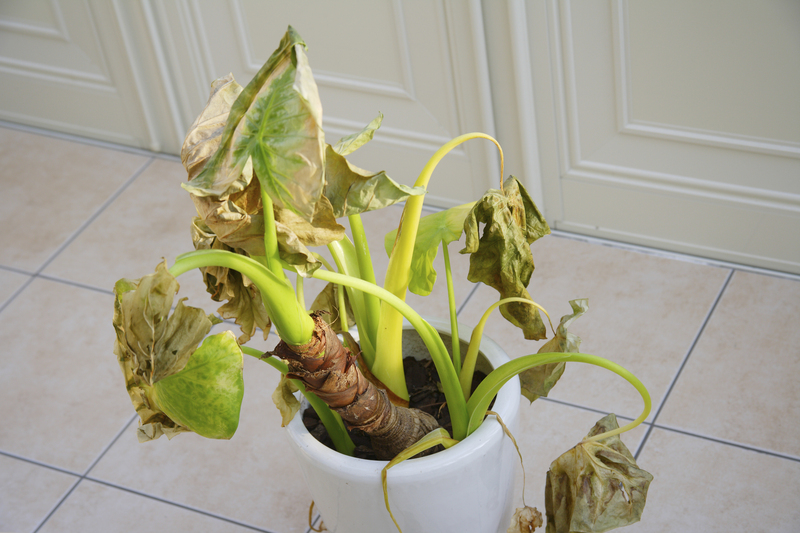Lawn Care Habits That Help Avoid Drought Stress in the Hottest Months
As summer's heat intensifies, maintaining a lush, green lawn becomes increasingly challenging. Drought stress can leave your grass brown, brittle, and patchy--unless you develop the right lawn care routines. This guide presents comprehensive, expert-backed strategies to help your turf stay healthy during the hottest months, emphasizing sustainable practices to avoid drought stress and keep your lawn thriving all season long.
Understanding Drought Stress in Lawns
Drought stress occurs when grass loses more moisture than it receives, causing blades to wilt, turn brown, and, in severe cases, die back. During the hottest months, your lawn faces the dual challenge of soaring temperatures and scarce rainfall, so understanding the symptoms and causes is crucial to effective prevention.
Common Signs of Drought Stress
- Bluish-gray or dull-colored grass
- Footprints remain visible due to lack of resilience
- Slow or stunted growth
- Grass blades curling or folding lengthwise
Recognizing these early symptoms allows you to take swift action before drought stress irreparably harms your turf.

Essential Lawn Care Practices for Drought Stress Prevention
Adopting the right lawn care habits is your lawn's best defense against drought. Let's explore the must-follow practices for keeping your grass resilient throughout the scorching summer.
1. Watering Wisely
One of the most vital drought prevention methods involves proper irrigation. Not all watering is equal--timing, frequency, and technique matter.
- Water Early Morning: Water between 4-9 a.m. for optimal absorption and reduced evaporation.
- Deep & Infrequent: Aim for about 1-1.5 inches per week, delivered in fewer, deeper sessions rather than daily, shallow sprinkles.
- Water the Roots: Focus on soaking the root zone (6-8 inches deep) to encourage deeper root growth and increased drought tolerance.
- Observe Rainfall: Adjust watering schedule based on recent or expected precipitation to avoid overwatering.
Avoid watering at night, as this keeps grass blades wet for longer, promoting disease.
2. Mow High and Mow Smart
Your mowing technique greatly influences how well your lawn withstands hot and dry spells.
- Raise Your Mower Blade: Set the height to leave grass 3-4 inches tall. Taller grass shades soil, conserves moisture, and develops stronger roots.
- No More Than One-Third: Never remove more than one-third of grass height in a single mow to prevent shock.
- Keep Blades Sharp: Dull mower blades tear the grass, causing undue stress and making lawns more susceptible to drought damage.
- Leave Grass Clippings: Mulch clippings return moisture and nutrients, aiding in heat and drought recovery.
3. Mulching: Nature's Moisture Blanket
Mulching plays a crucial role in drought-resistant lawn care. Applying organic mulch, like finely shredded leaves or composted grass clippings, helps:
- Retain soil moisture
- Insulate roots from heat
- Slow evaporation
- Enrich the soil as it breaks down
Mulch benefits both lawn and garden beds, especially when summer temperatures soar.
4. Fertilizing: Less Is More in Hot Weather
While fertilizing seems like a boost for your lawn, excessive or improper application during hot months can cause more harm than good.
- Avoid Nitrogen in Summer: Nitrogen promotes rapid, tender growth that's easily scorched by heat and requires more water.
- Opt for Organic or Slow-Release Fertilizers: These deliver nutrients steadily without overwhelming the grass.
- Test Your Soil: Only fertilize based on soil test results, and avoid unnecessary feeding when your lawn is under heat or drought stress.
Lawn care experts recommend fertilizing in the spring and fall--never during periods of drought stress or peak summer heat.
Advanced Strategies for a Drought-Resilient Lawn
Consistency with basic lawn care habits sets the stage for resilience. For further protection, implement these advanced methods:
1. Aeration: Give Roots Room to Breathe
Compacted soil impedes water infiltration and root growth. Aerating--removing small plugs of soil--improves moisture absorption, reduces runoff, and encourages deep root systems. For most lawns, aerate once yearly, ideally in fall or late spring before extreme heat arrives.
2. Overseeding with Drought-Tolerant Grass Varieties
Opt for grass species bred for improved drought tolerance, such as:
- Bermuda grass (warm climates)
- Zoysia grass
- Tall fescue (cool, transitional areas)
- St. Augustine grass
Overseeding in spring or fall ensures that your lawn can better bounce back from drought stress each summer.
3. Reduce Lawn Traffic and Stress
Minimize heavy use of your lawn during drought, as compacting soil further reduces your turf's ability to absorb water. Create designated walkways or play areas to protect vulnerable patches.
4. Strategic Landscape Design
Incorporate drought-resistant plants, shrubs, and trees to provide natural shade and reduce competition for water. Shaded areas will help the grass retain soil moisture and lower ground temperature.
Smart Technology for Water Efficiency
Modern tools and automation can make your lawn care routine more efficient:
- Soil Moisture Sensors: Smart sensors monitor soil dryness and automate irrigation only when needed.
- Smart Sprinkler Systems: Program these devices to adjust watering according to weather forecasts, soil moisture, and lawn zones.
- Rain Barrels: Collect rainwater for eco-friendly irrigation during dry spells.
These technologies can help you conserve water and minimize the risk of drought stress.
Common Mistakes That Exacerbate Drought Stress
Even the best intentions can go awry. Avoid the following habits that unintentionally harm lawns:
- Frequent, shallow watering (leading to weak, shallow roots)
- Cutting grass too short (removes protective cover, increases evaporation)
- Over-fertilization, especially in summer
- Ignoring soil health and compaction
- Over-reliance on chemical treatments (these can increase plant stress during drought)
Bonus: Natural Ways to Reduce Lawn Watering Needs
Want to use less water while still maintaining beautiful grass? Try these practices:
- Install Drip Irrigation: Precisely waters the root zone for maximum efficiency in gardens around the lawn.
- Clover or Eco-Lawns: Blend drought-hardy clover with traditional grasses to improve resilience and nitrogen-fixation.
- Compost Topdressing: Spread a 1/4 inch of finished compost each fall or spring to improve soil structure and moisture retention.
- Use Wetting Agents: Soil surfactants can help water penetrate dry, hydrophobic soils during drought.
When to Let Your Lawn Go Dormant
Some grass species naturally go dormant during drought, turning brown above ground while roots remain alive. If water restrictions are severe, it's often best to allow your lawn to rest and prioritize watering only when absolutely necessary to keep the roots viable.
Once cooler, wetter weather arrives, your lawn can recover rapidly from dormancy:
- Avoid aggressive mowing
- Begin deep, occasional watering as rainfall returns
- Continue with mulch and soil-enriching habits
- Reseed bare spots if needed in fall

Frequently Asked Questions About Lawns and Drought
How can I tell if my lawn is suffering from drought stress?
Lawn shows footprints, bluish tint, curled blades, and slow growth. Use a screwdriver test--if it's hard to push into the ground, soil is too dry.
Is it better to water more often during a drought?
No. Deep, less frequent watering encourages root growth and is more effective than frequent, surface-level watering.
Should I fertilize my lawn in extreme heat?
It's best to avoid fertilizing during heatwaves. Excess fertilizer increases stress; save feeding for spring or fall.
What type of grass is most drought-resistant?
Bermuda, zoysia, buffalo, and tall fescue are among the most drought-hardy species, depending on your climate.
Conclusion: Achieving a Lush, Drought-Resilient Lawn in the Hottest Months
With rising summer temperatures, maintaining a healthy lawn requires smart, sustainable habits focused on water conservation, soil health, and appropriate maintenance techniques. By understanding the principles outlined here--wise watering, proper mowing, strategic fertilization, and the adoption of drought-tolerant varieties--you can build a vibrant, drought-proof lawn that endures even during periods of intense heat.
Consistency is the key: monitor your lawn regularly, stay responsive to its needs, and avoid lazy shortcuts. With these proven lawn care strategies, you'll not only reduce your water use and utility bills, but also preserve your turf as a cool, inviting retreat during summer's hottest days.
Key Takeaways for Avoiding Lawn Drought Stress
- Water deeply and infrequently for better root health
- Mow high and leave clippings for natural mulch
- Avoid fertilizing during peak summer heat
- Choose drought-resistant grass types for long-term resilience
- Aerate and mulch to improve soil moisture retention
- Use smart watering technology for efficiency
Commit to these habits and your lawn will stay green, lush, and stress-free--even in the hottest weeks of the year!